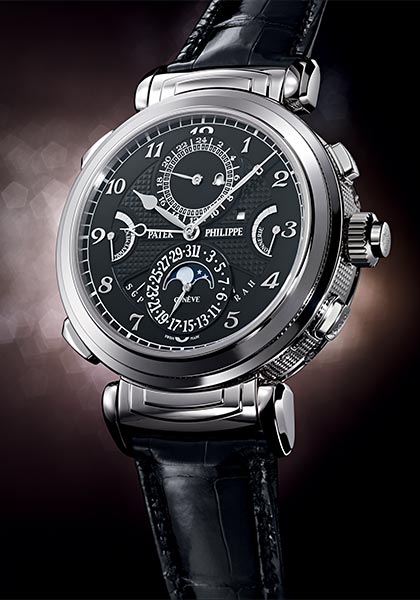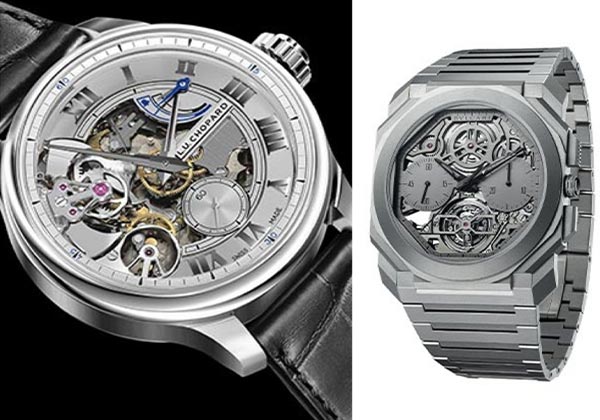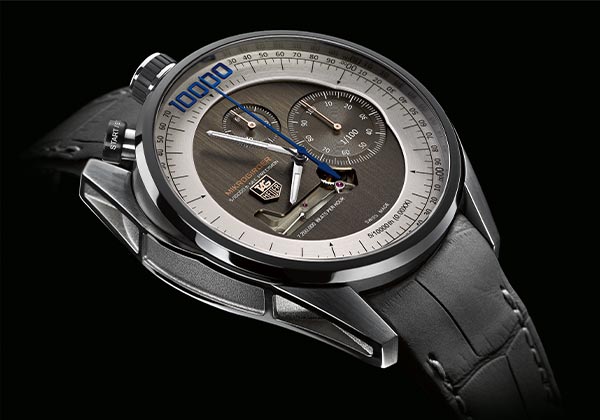The word ‘complication’ in watchmaking is fraught with debate. It is generally agreed that a complicated watch is not, and has never been, a priori, ‘better’ or ‘more prestigious’ than a non-complicated watch. No one can reasonably argue that the RR-1 chronometer calibre designed and built by Rexhep Rexhepi of Akrivia is somehow a lesser movement than any number of mass-produced date watches or chronographs out there. Despite this understanding, we watch enthusiasts as a community continue to associate the word ‘complication’ with inherent value, and draw distinctions that are not necessarily useful in the context of timekeeping performance or assessing watchmaking know-how.
In a way, this slightly illogical attitude towards complications may be indicative of the spirit behind much of mechanical watchmaking in the first place. It is not logical to love things that have outlived their technological utility; it is not logical to take pleasure in setting ourselves mechanical challenges when modern digital devices offer us every function we could possibly ask for. But if you’re going to be logical about everything in life, you’ll miss out on a great deal of fun. The period between 2001 and 2020 will be remembered for its exceptional flowering of horological creativity and exuberance, especially the years leading up to 2009, which industry observers say echoed the contemporary unsustainable economic boom. These were the years when nothing was too crazy, too outrageous, too esoteric to somehow cram into a wristwatch. It was the time of mega-complication.
If you're counting...
At the end of 2009, the self-proclaimed ‘Master of Complications’, Franck Muller, debuted the Aeternitas Mega 4, the most complicated wristwatch in the world. In the brand’s signature barrel-shaped case, the Aeternitas Mega 4 boasted 36 complications, including a grande and petite sonnerie and the rarely seen secular calendar, which, with its 400-year period of display accuracy, ranks above the perpetual calendar.

In 2014, Patek Philippe launched the Grandmaster Chime in celebration of its 175th anniversary. The Grandmaster Chime was a double-dial wristwatch, extensively decorated, housing 20 complications, that took over 100,000 hours to develop, produce and assemble. At the time of launch, the Grandmaster Chime had a price tag of USD 2.5 million; however, the 2019 edition of the Only Watch charity auction showcased a unique Grandmaster Chime in steel that sold for USD 31.2 million. The allure of a mega-complicated watch endures, and even more so when combined with the magic multiplying factors of ‘Patek Philippe’, ‘pièce unique’, and ‘stainless steel’.

The next timepiece – albeit in the form of a pocket watch rather than a wristwatch – to smash complication records was the 2015 Vacheron Constantin Reference 57260. The key information lies in the name of the watch: 57 complications in commemoration of the brand’s 260th anniversary. The watch was made on private commission, which explained some very specific complications such as the Jewish perpetual calendar and indication of Yom Kippur. The latter was entirely novel in any known timepiece, and the making of Reference 57260 significantly expanded the realm of watchmaking savoir-faire at Vacheron Constantin.
These complication counts – 36, 20, 57 – are certainly illustrative of watches that dominate the haute horlogerie scene: They nonetheless cannot be taken as absolute, purely by the fact that different watch companies have different systems of counting complications. Some choose to count the perpetual calendar as a single complication, while others count each calendar indication as a separate complication. When looking at highly complicated watches, it’s important to remember that there is a lot more to these timepieces than a list of facts, and that the numbers don’t always tell the full story.

And just for the record
When it comes to complications, less is definitely not more. Go big or go home, seems to be the prevailing philosophy, which works out well for us – as some of the most exciting watches released in recent years owe everything to this mindset. A minute repeater may be a discreet, intimate complication by design, but that hasn’t stopped some brands from redefining the parameters of a chiming watch. The Jaeger-LeCoultre Antoine LeCoultre Master Minute Repeater (2005) was declared the loudest minute repeater in the world, the end result of a comprehensive in-house investigation into chiming watches. Improvements were made to traditional hammer-and-gong mechanisms, so that a strong, well-projected chime with minimal acoustic interference could be achieved. Subsequently, Hublot brought out the King Power Cathedral Minute Repeater Tourbillon in 2011, with a case in carbon fibre composite that leveraged the lightness and rigidity of this material to reach new heights of sound transmission.

In terms of envelope pushing, however, the Audemars Piguet Supersonnerie, which began as the 2015 Royal Oak Concept RD#1, takes the prize. In conjunction with the Swiss Federal Institute of Technology in Lausanne (EPFL), the Audemars Piguet research and innovation team delved deep into the science of acoustics to rigorously isolate and thereafter reproduce the elements of a repeating watch that would lead to the optimal chime. While some watch companies dissected sound, others dissected time itself. Between 2011 and 2012, TAG Heuer’s Mikro chronographs – the 2011 Mikrograph and Mikrotimer and the 2012 Mikrogirder – brought chronograph accuracy to impossible standards, managing to incorporate a mechanical oscillator that could measure 5/10,000th of a second.

Its sister brand Zenith, the originator of the fast-beat chronograph, has since followed and made the 1/100th of a second chronograph a staple of its main collection (compared to the Mikro concept watches). Also within the LVMH stable but pursuing a different path of chronograph records is Bulgari, which launched first the Octo Finissimo Chronograph in 2019 and arrived with the even more impressive sequel, the Octo Finissimo Chronograph Tourbillon in 2020 (even more impressive due to the fact that it was launched in the middle of a global health crisis).
*On the occasion of GMT Magazine and WorldTempus' 20th anniversary, we have embarked on the ambitious project of summarising the last 20 years in watchmaking in The Millennium Watch Book, a big, beautifully laid out coffee table book. This article is an extract. The Millennium Watch Book is available on www.the-watch-book.com, in French and English, with a 10% discount if you use the following code: WT2021.









